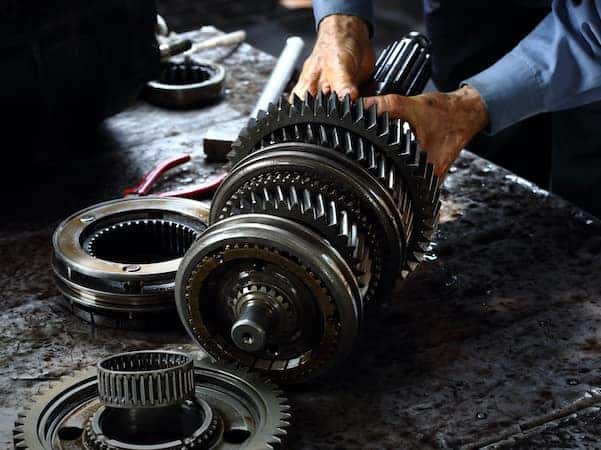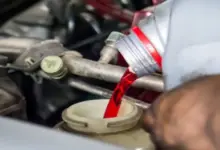Honda Transmission Repair and Replacement Price With Detail
Honda makes cars that are very popular in Canada. If Honda Transmission Repair needs to be fixed, you could get a pretty big bill. Many Canadians have bought cars from the Japanese company because they are reliable, cheap, and good for petrol mileage. The Honda Civic was Canada’s best-selling passenger car for 24 years in a row (though it no longer holds the top spot at the time of writing.)
Because Hondas are reliable cars, they don’t have a lot of problems with their transmissions. They do, however, have some trouble with transmission. It’s impossible to make the perfect transmission for many reasons, not the least of which is that they’re so complicated. A transmission has a lot of things that could go wrong, and eventually something will.
There seem to be some problems with Honda Transmission Repair that come up more often than others. These problems include torque converters that don’t work, cars that overheat, and cars that slip out of gear. If your Honda has any of these problems or other problems, please bring it to the nearest Mister Transmission so our experts can check it out.

How much does a Honda transmission repair cost?
The cost of Honda transmission repair can vary a lot depending on what needs to be fixed, where it’s done, and what kind of Honda you have. Honda transmission repairs usually cost between $100 and $4,000. The higher end of that range is more common, though.
Even though a Homda transmission repair is the most expensive transmission repair for a Honda, it’s not the only type of transmission service your Honda may need. A replacement can cost between $1,000 and $4,000 on average, but there are many other ways to fix a Honda transmission.
- $100 to $200 to change the transmission fluid in a Honda.
- $15 to $200 to replace the speed sensor in a Honda transmission.
- From $20 to $190 to replace the oil switch on a Honda transmission.
Bottom line: your Honda transmission Repair is one of the most expensive parts to fix. Smaller repairs will cost less than a full replacement, but the transmission is still one of the most expensive parts to fix. And since the average Honda can last up to 300,000 miles and the average transmission lasts between 100,000 and 200,000 miles, it’s likely that you’ll need to replace the transmission in your Honda at some point.
Also Read: What should you do when the Honda check engine light comes on
Why is a transmission important?
What is the purpose of this very expensive part of your Honda? The transmission is the part of the powertrain that makes sure your wheels get the right amount of power to move at a certain speed. This is done by changing gears, which can be done by hand or automatically.
Almost every new Honda has an automatic transmission, and most of them have a CVT, which stands for “continuously variable transmission.” As of the 2023 model year, there are only three cars that don’t have an automatic transmission: the Honda Civic Hatchback, the Honda Civic Type R, and the Honda Civic Si. The Type R and Si come with a manual transmission as standard.
Is it cheaper to fix a transmission or buy a new one?
The most expensive type of transmission service is replacing the transmission, which usually costs between $2,000 and $4,000. But the cost of replacing your transmission will depend on what kind of transmission you choose to put in its place.
An OEM replacement is the most expensive way to fix a transmission. If you have a dealership replace your transmission with an original equipment manufacturer (OEM) transmission, you can expect to pay between $3,400 and $8,000 just for the parts. Labor costs can add another $500 to $1,000, depending on where you live.
If you want to replace your transmission for less money, you could get a remanufactured or rebuilt one, or even one from a salvaged vehicle. The salvage transmission will be the least expensive, costing between $800 and $1,500.
However, its quality and dependability will be lower, so you may need to replace it again soon.
A remanufactured transmission will cost less than a transmission rebuild.
This is because a remanufactured transmission has been rebuilt by Honda experts to meet manufacturer specifications. Rebuilt transmissions can cost as little as $1,100, while remanufactured transmissions can cost anywhere from $2,000 to $4,000.
What are the most common issues with an automatic transmission in a Honda?
When people buy a Honda, it’s usually because they want a reliable car that doesn’t need much work. And this is usually true of Honda models. But neither they nor their transmissions are perfect. Many of these problems are common to all transmissions, but Honda transmissions seem to have some of these problems more often.
-
Damaged torque converter pump
-
Transfer case failure
-
Faulty shift solenoids
-
Bad gaskets
Honda vehicles often have transmissions that slip out of gear. Stop-and-go traffic and cold weather can be hard on Honda transmissions, just like they can be hard on most transmissions. The torque converter is a common place for an automatic transmission to break, and this is true of Honda transmissions as well.
How we find out what’s wrong with a transmission
Transmission, we can sometimes figure out what’s wrong with a transmission just by hearing what’s wrong. We also know where to look if something is wrong with a Honda. Some common signs that something is wrong with an automatic Honda transmission are:
- Transmission slipping, grinding, or jumping
- Overheating
- Problems with speeding up
- Transmission fluid that was tainted
- When the check engine light comes on
- Changes in gears at high RPM
Computers are built into modern Hondas. We can talk to these computer systems at Honda Transmission repair because we have diagnostic tools that let us. The first thing we do to figure out what’s wrong with your Honda’s transmission is to connect its onboard computer to our diagnostic equipment. This makes a code that tells us where the problem is.
The next step is to take your car for a test drive so we can see how it works in real time. Sometimes a hands-on check is needed, but our cutting-edge diagnostic technology is an important tool for figuring out what’s wrong with a transmission. Most of the time, Honda transmissions only need minor repairs, but sometimes they need more extensive work.
Signs that the transmission in your Honda is going bad
Not sure how to tell if your transmission is broken? In addition to having the transmission fluid checked regularly, keep an eye out for these signs of trouble, especially if your Honda is getting close to 100,000 or 200,000 miles.
- Rough shifting: If your Honda is hard to change gears, there’s probably something wrong with the transmission.
- Don’t know what kind of fluid is leaking from your car? If you see a puddle of slippery red fluid under your Honda, it’s probably because the transmission fluid is leaking.
- Strange noises in N: If you hear strange noises when the car is in Neutral, it could mean that the transmission is going bad.
- Smell of burning: Like most serious and expensive car problems, transmission failure can make the car’s cabin smell like burning rubber.
- Grinding or shaking: A rough ride is usually caused by a transmission that isn’t working right.
- Check Engine Light or a Transmission Service Light: The Check Engine Light can sometimes be a sign of very small problems, but it’s more likely to come on if there’s something wrong with your transmission.
If you think there might be a problem with the transmission, you can use an on-board diagnostics (OBD-II) scanner to look for engine trouble codes. Look out for the P0730 engine code, which shows that the gear ratio is wrong, or the P0846 engine code, which shows that there is a problem with the pressure of the transmission fluid.
How to fix a broken Honda transmission
If your Honda’s transmission breaks, you should take it as soon as possible to a repair shop or Honda dealership. When you notice problems, it’s best to get to the shop as soon as possible.
You can take the car to a mechanic you know and trust, or you can look for transmission specialists in your area. Independent auto shops often have great customer service and deals that can keep costs down, but a dealership will have technicians who know how to fix Honda transmissions and are experts in doing so.
How to keep your Honda transmission in good shape
The best way to keep your Honda’s transmission in good shape and avoid a costly early failure is to check and change the transmission fluid on a regular basis.
Transmissions often break down because the fluid is low or dirty, or because the vehicle is too heavy and puts too much stress on the drivetrain. If you want to avoid these issues, you should:
- About once a month, you should check your transmission fluid.
- Use the type of transmission fluid that the owner’s manual for your Honda says to use.
- If your car has an automatic transmission, don’t change gears while it’s moving.
- Change the transmission filter often.
- Before you drive, give your car time to warm up.
- Get your transmission checked once a year.
- Taking care of your Honda’s transmission regularly can make it last longer and run better overall.
How to check transmission fluid
If you’ve never checked your transmission fluid before, there’s good news: it’s just as easy as checking your engine oil. Keep in mind that you should check the transmission fluid while the car is running. The best way to do this is to let the car warm up for a few minutes so the fluid can expand. And then—
- Find the dipstick for the transmission fluid. It will have the same look as the oil
- Usually, the dipstick is farther back in the engine bay.
- Pull out the dipstick, wipe it clean, put it back in, and then pull it out again.
- Make sure the fluid level on the dipstick reaches the “warm” line.
- If needed, add fluid in small amounts and check the level with the dipstick in between.
- Switch out the dipstick.
Transmission fluid in your Honda should be clear and dark red, like really thick, oily Hawaiian Punch. If the fluid on the dipstick looks brown or black, it is old or dirty and needs to be replaced, along with the filter.
Light pink fluid, on the other hand, is a very bad sign. It means that water or coolant has gotten into the transmission fluid, which can mean that the whole transmission needs to be replaced.
Don’t forget that not all Hondas, especially newer ones, have dipsticks for the transmission fluid. “Sealed transmissions” are what these cars have. You can check the fluid level in these cars by removing an inspection plug on the side of the transmission case.
But these transmissions are harder to check and fix than ones you work on with a dipstick. And most of the time, a driver who isn’t very experienced should take their car to a professional to have these kinds of transmissions fixed.
